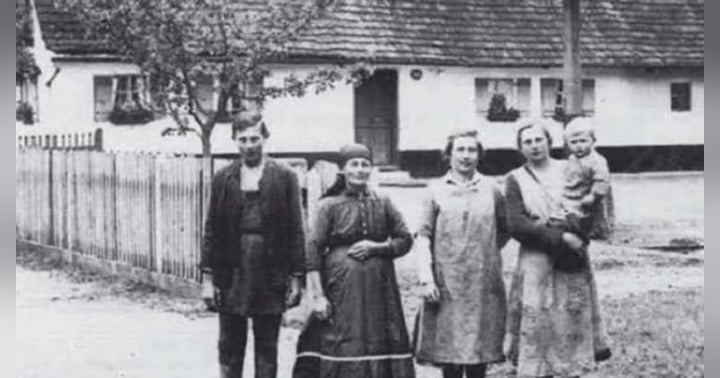How a Mob Got Away with Murder in Truckee’s Chinatown

The Rise of Truckee’s Chinatown: A Community Built on Railroad Tracks
1868: The Railroad That Changed Everything
By 1868, railroad construction had climbed its way into the unforgiving terrain of Donner Pass, California. Laying those steel tracks through the mountains was no small feat. It required explosives, backbreaking labor, and a workforce willing to take on a job that was as dangerous as it was essential. Enter the Chinese laborers.
Thousands of them arrived, carving through the landscape to make way for the Central Pacific Railroad. Without them, the tracks wouldn’t have been built, and without those tracks, Truckee wouldn’t have transformed into the booming town it became. But once the railroad was complete, the question remained—what happened to the workers who had made it all possible?
A Thriving Chinatown Emerges
Many of the Chinese laborers chose to stay. They had spent years shaping the land, and now they sought stability—maintaining the railroads they helped build or finding work in Truckee’s rapidly growing lumber industry. As their presence solidified, so did the town’s Chinatown, which quickly became the second-largest in the country. Out of Truckee’s 1,467 residents, over 400 lived in Chinatown, creating a bustling community of workers, shopkeepers, and families.
By 1869, Truckee’s Chinatown was firmly established—enough to catch the attention of the New York Tribune, which published a piece describing the area:
“A city of John Chinamen… With an appearance of Irish Shanties, the inevitable saloons, a very comfortable Railroad hotel, and certain thriving marks of infinite variety… There are long streets of Chinese laundries, barbers stores, tea stores, peanut stands, and nondescript booths, all alike as two peas in a pod and adorned with big signs, persuasive no doubt, to the Celestial mind, and impenetrable to us.”
The article paints a picture of a town that had fully embraced its Chinese population—though through the lens of condescension that was standard at the time. But despite the dismissive tone, Truckee’s Chinatown was thriving.
That wouldn’t last.
Just six years after the Tribune article was published, a fire tore through Chinatown, setting off a chain reaction that would bring this once-prosperous community to its breaking point.
1875: The Fire That Became an Excuse
Flames in the Night
At around 3 a.m. on a May night in 1875, a fire broke out in the kitchen of a Chinese restaurant in Truckee’s Chinatown. Within minutes, the flames jumped from building to building, destroying more than 40 Chinese-owned structures and four houses on California’s Front Street. The white-owned homes were insured. Most of Chinatown was not. The total loss was estimated at $60,000—about $1.66 million in today’s money.
While the Chinese community sifted through the wreckage, trying to salvage what they could, Truckee’s white landowners saw an opportunity. At their own meeting, held not long after the fire, they came up with a plan to erase Chinatown altogether.
A Forced Relocation Disguised as “Help”
The landowners informed the Chinese community that they could rebuild, but not on the land where Chinatown had stood for years. They would now have to relocate to the south side of the Truckee River.
On paper, it might have looked like a simple reshuffling. In reality, it was a calculated move.
Once the new Chinatown was under construction, the town announced a road expansion project that conveniently cut right through the middle of the new settlement, leaving very little space for homes or businesses. Within a month of the fire, local white residents had also raised enough money to purchase the land where Chinatown had originally stood, ensuring that no Chinese residents could return. They even worked out an agreement with landlords to block future sales or leases to anyone of Chinese descent.
The message was clear.
Defiance in the Face of Displacement
The white landowners had hoped that forcing Chinatown across the river would cause the Chinese population to dwindle. Instead, the people of Chinatown rebuilt right where they had been before.
This wasn’t just a logistical choice. For many, this was the first place they had been able to set down roots after years of following railroad work across the state. Chinatown was home, and they weren’t giving it up that easily.
Truckee’s white population, already uneasy about the growing Chinese community, saw this as outright defiance. And that defiance wouldn’t go unanswered.
The Retaliation: When Truckee Declared War on Chinatown
The “Wrong” Answer to Displacement
The people of Truckee were furious. Instead of quietly accepting their forced relocation across the river, the Chinese community had rebuilt their homes and businesses exactly where they had been before. It wasn’t just resilience—it was defiance. And for the white residents who had gone out of their way to make Chinatown disappear, it was unacceptable.
In response, a group of local men formed the Truckee Caucasian League, a group dedicated to making life for the Chinese workers as unbearable as possible. They quickly aligned themselves with another racially motivated organization in San Francisco, the Young Men’s Universal Reform Club, more commonly known as the San Francisco Anti-Coolie Club. These groups followed the ideology behind the Anti-Coolie Act of 1862, a law designed to keep Chinese laborers out of California to protect jobs for white workers.
Within weeks, the Truckee Caucasian League had over 200 members, all of them focused on one thing—harassing the Chinese community until they had no choice but to leave.
June 17, 1876: The Night of Violence
According to later testimony, the League held a meeting on June 17, 1876, just over a month after the fire that had nearly wiped out Chinatown. The topic of discussion was how to “give the Chinamen a scare” and finally drive them out of Truckee for good.
For most of the men, the meeting ended there. But seven of them had other plans.
Later that night, a smaller group gathered at a cabin owned by a man named Frank Wilson, where they armed themselves and set out toward a campsite north of Truckee, where Chinese laborers had been forced to settle.
At around 1 a.m., they came upon the first cabin, where two men, Ah Joe and Ah Lang, were sleeping.
George W. Getchell and J. O’Neal crept up to the cabin, doused it in kerosene, and set it on fire.
Inside, Ah Joe and Ah Lang scrambled to put out the flames, but the men outside weren’t about to let that happen. They aimed their guns through the cabin windows and fired. Ah Lang was hit. He managed to survive by crawling into a hole and waiting for the gunmen to move on. The next day, 48 pellets were removed from his body.
The mob moved on to the next cabin, a kilometer away, where a group of Chinese workers were still sleeping, unaware of what had just happened. The men set this cabin on fire too and waited for someone to run.
The Murder of Ah Ping
Ah Ping was the first to make it outside, racing to the river with a bucket to collect water to fight the flames. He never made it back. The men outside shot him in the stomach, forcing him to retreat into the burning building.
With no other choice, he and the other men inside covered themselves in blankets to protect themselves from the fire. But the heat became unbearable, and eventually, they had to risk running.
Using the smoke and flames as cover, they escaped across the river, hiding Ah Ping in some bushes until daybreak. At sunrise, they carried him nearly five kilometers over rugged terrain to the home of their employer, Joseph Gray, who immediately called for a doctor.
The doctor later determined that the gunshot wound itself wasn’t necessarily fatal. But the brutal journey to seek help had turned Ah Ping’s injury into something he couldn’t survive. He died that same afternoon.
Justice Delayed, Justice Denied
Publicly, the Governor of California called for justice. Privately, the leadership of Truckee stalled. Over a month after Ah Ping’s murder, local authorities had made no real progress in tracking down his killers.
Not that the killers were being particularly discreet. Some of them weren’t just bragging about what they had done—they were looking for ways to make even more money off of it.
George W. Getchell, the man who had set fire to the first cabin, and Calvin McCullough openly discussed their next scheme: securing a position as night watchmen in Chinatown, where they would convince the local Chinese business owners to offer a cash reward for information about the Trout Creek murderers. Once the money was raised, they planned to tell a believable story, split the cash, and walk away richer.
McCullough’s friends weren’t interested in the plan, and word eventually made its way to authorities. Both he and Getchell were arrested, and once in custody, they gave nearly identical confessions.
Because of their statements, five more men were arrested, including Frank Wilson, who had provided the weapons that night. But even with confessions and arrests, actually convicting the men responsible was an entirely different matter.
At the inquest, more than 40 members of the Truckee community rallied in support of the accused. They provided alibis, spoke as character witnesses, and swore that these men were simply not the type to commit murder.
But under increasing political pressure, the case had to move forward. The trial was set.
And then an all-white jury was selected.
Nine Minutes to Walk Free
The prosecution argued that the attack was a planned, racially motivated act of terrorism, orchestrated by the Truckee Caucasian League.
The defense had a different story.
They claimed that a competing group of Chinese laborers had carried out the attack, turning the massacre into a fight between rival workers. Then, as if that wasn’t shaky enough, they managed to produce 50 witnesses, each of whom had airtight alibis for the accused men.
The jury deliberated for exactly nine minutes before returning with a verdict.
Not guilty.
The “Truckee Method” and the Parade That Followed
Shortly after the trial ended, another suspicious fire broke out, wiping out what little remained of Chinatown.
Then came the final move: a community-wide boycott of all Chinese-owned businesses. But Truckee didn’t stop there. They also boycotted any white-owned businesses that continued to employ Chinese workers.
It worked.
The campaign was so successful that it became a model for other towns looking to force out their Chinese populations. It was so effective that it even earned a name: The Truckee Method.
And when the last Chinese laborer finally left town, Truckee held a parade to celebrate.




